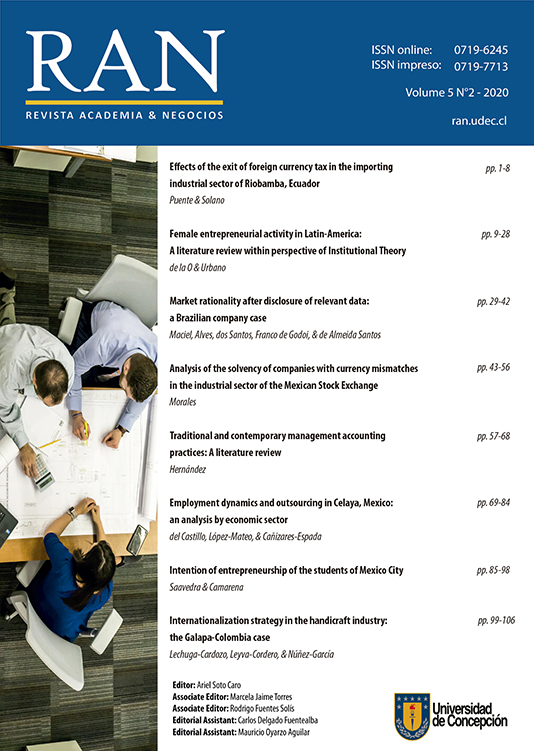Estrategia de internacionalización en la industria artesanal: el caso Galapa-Colombia
Palabras clave:
Exportación, Industria artesanal, Internacionalización, Marketing internacional, Talleres artesanalesResumen
El objetivo de este artículo es mostrar evidencia de las estrategias de internacionalización de la industria artesanal en Galapa, Colombia. Mediante un
estudio cuantitativo-descriptivo, no experimental, transeccional y de campo, se desarrolló un instrumento metodológico aplicado a una muestra de microempresas del sector de artesanías del municipio de Galapa. Dicho cuestionario presenta seis ítems para la variable “condiciones de la compañía”, 19 para la variable “condiciones del producto”, 24 para “condiciones de exportación”, y nueve para “promoción comercial”. Los resultados revelan el predominio de talleres sin identificación de la posición arancelaria de sus productos, un desconocimiento de la oferta exportable, la no selección de países objetivos y realización de estudios de mercado objetivo; por lo que desconocen requisitos comerciales, no tienen claridad de los mecanismos de pago, no conocen el régimen cambiario colombiano y no cuentan con personal formado en segunda lengua. No existe participación en ferias comerciales o se han
realizado envíos de muestras sin valor y exportaciones directas. Se sugiere, a manera de conclusión, la generación de sinergias interempresariales y el desarrollo asociativo de capacidades para la óptima negociación y exportación de sus productos, en los mercados internacionales.






















